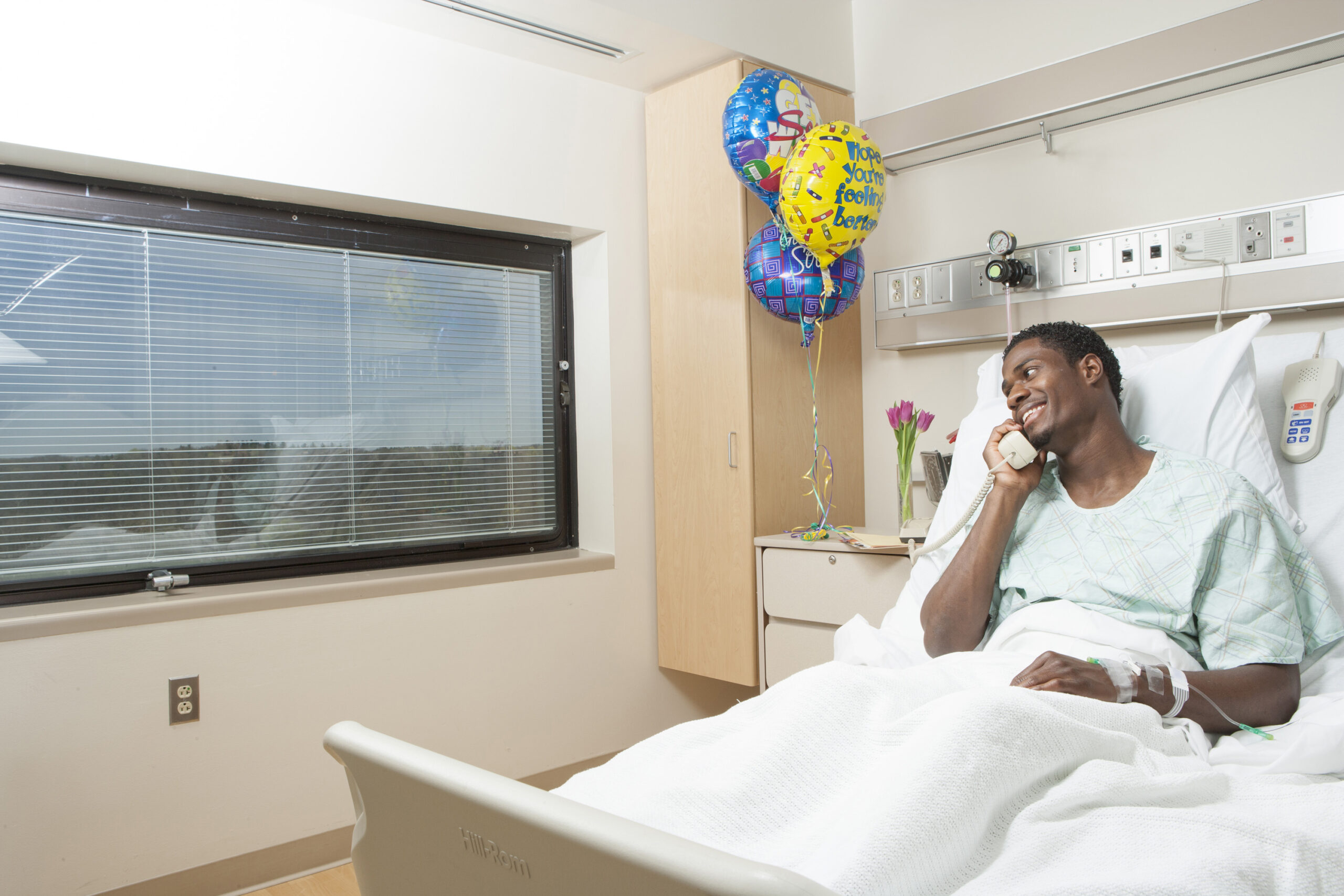
21 Mar You Can’t Expect Patients to Get Healthy If the Hospital is Not
When being treated in a hospital for injury or illness, we expect the utmost care, and trust the facility to bring us back to health.
In a recent article in the New York Times ( “Bad Hospital Design is Making Us Sicker”), Dr. Dhruv Khullar outlines various challenges that a patient will face when trying to heal in a hospital:
- Noise
- Infections
- Falls
- Lack of privacy
- And no connection to nature
Perhaps the most crucial contribution of my work as an Integrative Spaces specialist is to emphasize this last point: how enormous an impact nature has on a person trying to heal.
When we’re vulnerable to an illness or to the effects of drugs or surgery, we naturally reach for a lifeline. Sometimes people mistakenly believe television will help them get better. Unless the programming is intended to help patients heal, it will only distract from the process.
Sometimes patients feel that if visitors abound, their healing will hasten. But it could do the opposite by tiring out someone who needs nothing but rest.
As a child who was prone to motion sickness (cars, boats, Ferris wheels), I had a doctor (upon reflection, a very enlightened one) who told my parents to make sure I could see the horizon line. He suggested I look past my immediate surroundings (inside of the car, boat, etc.) and make a connection to where heaven touched earth. I had to sit in the front seat and look straight ahead. I may not have been able to see that exact horizon spot but I do know it settled my stomach.
Windows in patients’ hospital rooms can connect them with the healing power of nature, and help them find a sense of balance, like me finding the horizon line. Having a window seems like an expected feature these days. But I’ve been in patient rooms where there wasn’t one. I stood in a room in a relatively new-built hospital where the window overlooked the roof of the next building which held an assortment of air conditioners and mechanical systems. The head of nursing told me the room was only used when all others were unavailable.
In contrast to that, I was part of a hospital project where birdbaths were installed outside each patient room. The window was extended closer to the floor to assure that the patient could see out.
A simple way around not having a window in a patient room, as Dr. Khullar also suggests, is to have a picture of nature. Landscapes, seascapes, flowers, trees, even a “river running through it”—–these are all manageable ways to help someone find their horizon line and heal.
It’s important to heal the hospital in order to facilitate patient healing.
